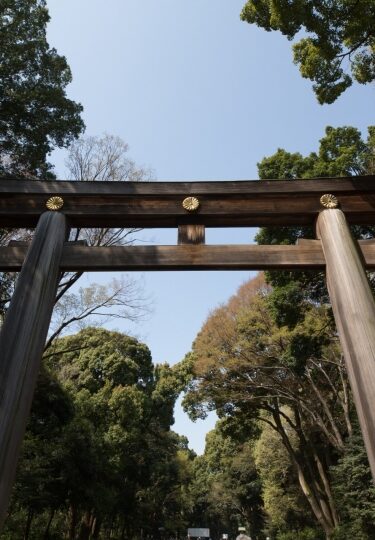The red torii that mark the entrance to Shinto shrines are one of the most evocative images of Japan. Seen in centuries-old paintings or modern advertising posters, they are a distinctive sight.
These gates stand at the boundary between the material world outside and the sacred, spiritual world inside. You should not enter them unless you are in a state of purity, and a water source often stands near them for washing hands and mouth.
Often found in remarkable natural settings, they are designed to inspire feelings of peace and tranquility. Many are also things of beauty in themselves.
Here are 10 of the best torii gates in Japan.
Fushimi-inari Taisha, Kyoto
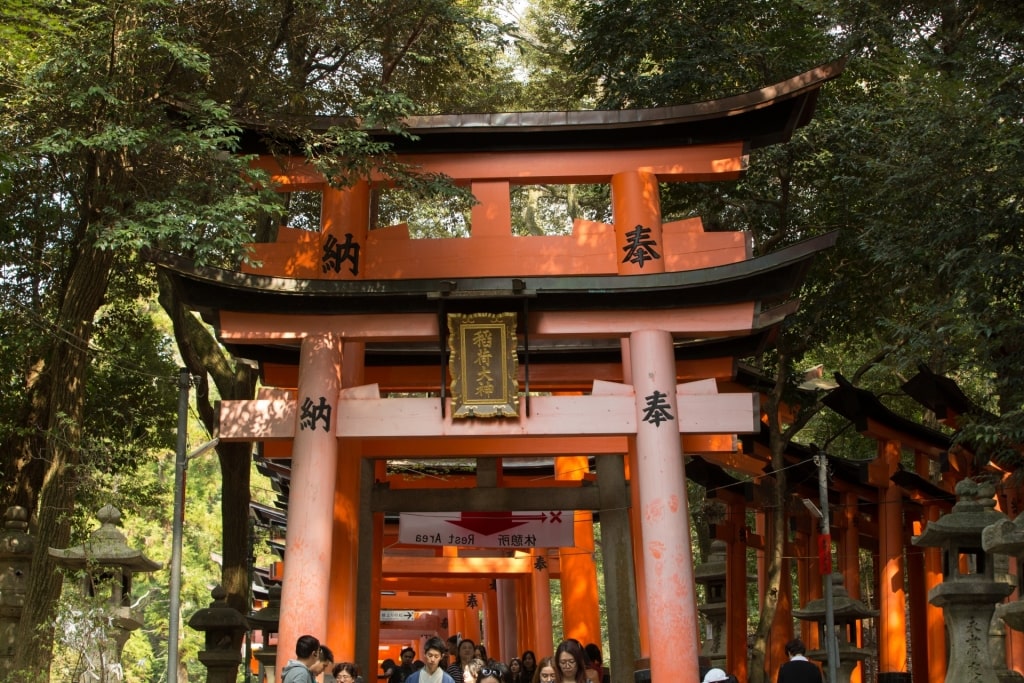
Fushimi-inari Taisha, Kyoto
The 10,000 or so torii at Fushimi-inari have been made famous by numerous tourism posters and videos. They wind their way up and down the hill in a procession of bright red gates, making it one of the most beautiful places in Japan.
The shrine is dedicated to Inari, the Shinto god of the rice harvest, and hence also of commerce and business. Businesses looking for good luck still add their own torii to the shrine.
This custom of adding gates to support or acknowledge prayers began during the Edo period (1603–1868). The central pathway up the mountain has around 1,000 torii, giving it the name of Senbon Torii (“Thousand Torii).
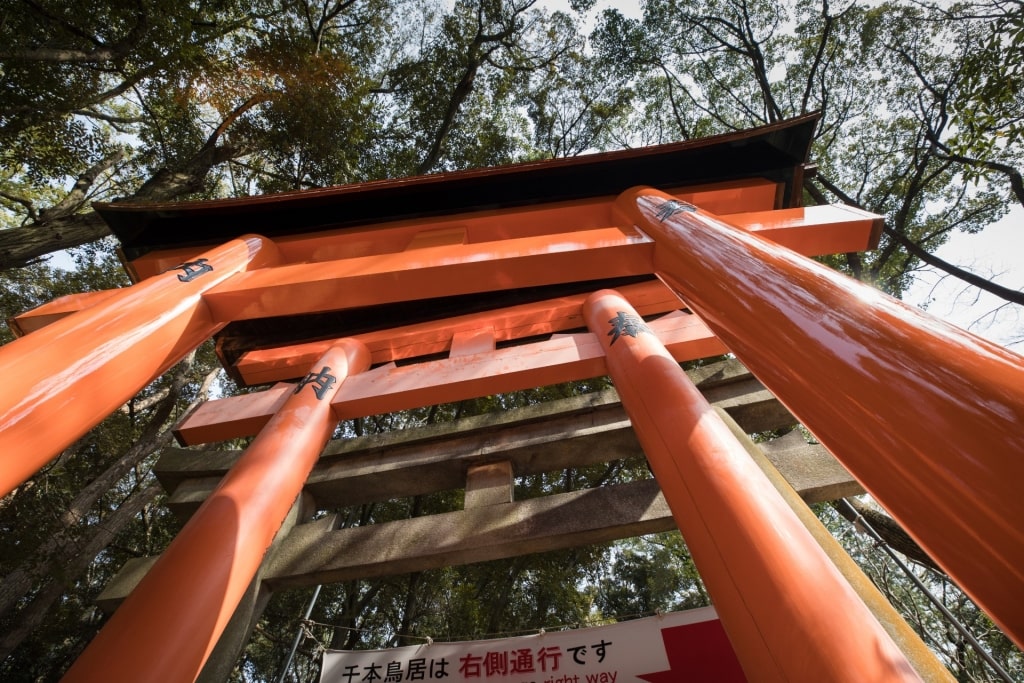
Fushimi-inari Taisha, Kyoto
The vermillion paint on the torii is traditionally thought to ward off evil spirits, being associated with the sun and light. It’s made with mercury sulfide that more practically also helps preserve the wood as an insecticide.
One Japanese word for red (“ake”) is also associated with the words for dawn or a beginning (of a day, week or month). These connections bring a strong sense of renewed hope to worshippers walking through any red torii. Fushimi-inari Taisha is a must-visit, even if you only have two days in Kyoto.
Meiji Jingu Shrine, Tokyo
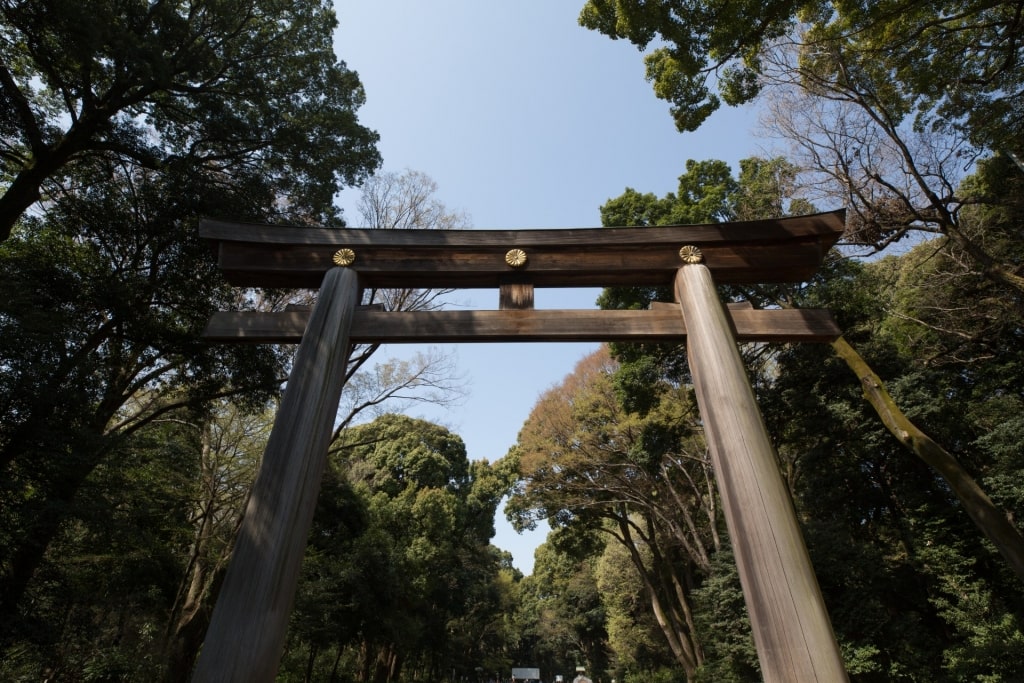
Meiji Jingu Shrine, Tokyo
The main torii gate at Meiji Shrine is among the largest wooden examples in Japan. It stands around 40ft tall and almost 60ft wide.
It is in the most common style, called “Myojin”, which you can recognize by the gentle upward curve of the top crosspiece, or “kasagi”. Another marker of this style is the “gaku” (plaque) with the name of the shrine.
Normally Myojin gates are painted red, but the ancient cypress from which Meiji’s torii is made is left bare. While large, it’s dwarfed by the surrounding forest of more 150,000 trees donated a century ago from all over Japan.
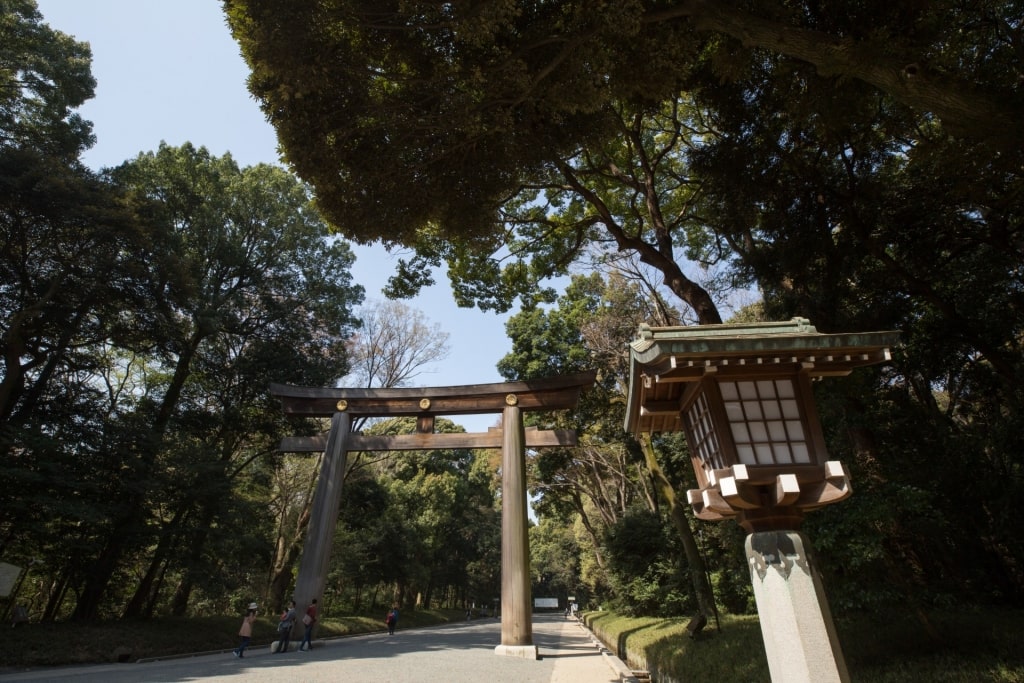
Meiji Jingu Shrine, Tokyo
The shrine opened in 1920 but was destroyed during World War II. Rebuilt by 1958, it is Tokyo’s major Shinto shrine and is very popular for weddings.
It is dedicated to the Meiji emperor and his wife, whose openness to western ways is marked by the barrels of French Burgundy stacked near the gate. Sake barrels given by Japanese manufacturers also stand nearby, in line with the more usual Shinto tradition.
Read: Most Beautiful Gardens in Tokyo
Takayama Inari Shrine, Aomori
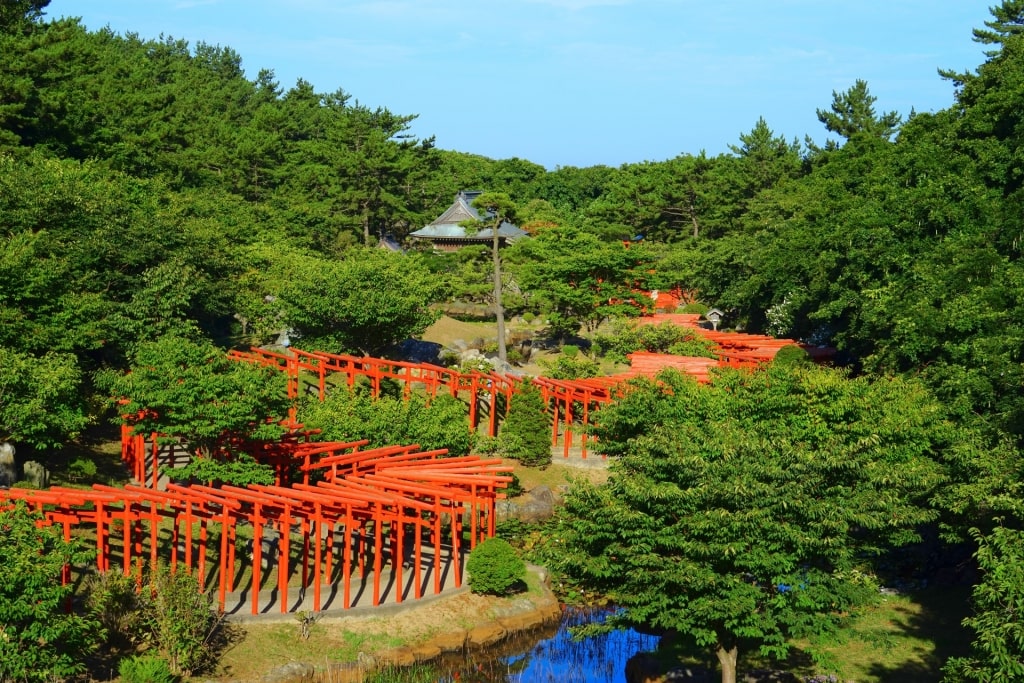
Takayama Inari Shrine, Aomori
With its hundreds of red torii, wandering up and down a forested hill, Takayama in Aomori is like a more compact, even more beautiful version of Fushimi. With no crowds and the added appeal of reflecting water, it’s a photographer’s dream.
The path to and through the torii involves a lot of walking and step-climbing but that long approach to a Shinto shrine is deliberate. It gives you time to embrace nature and reach the right spiritual mood for your visit.
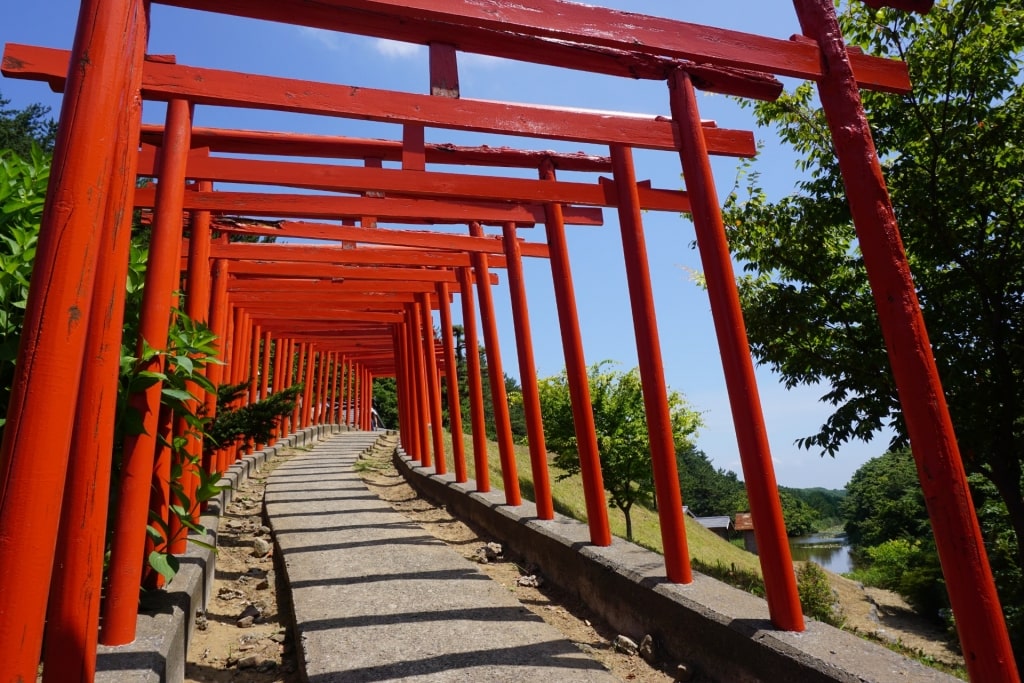
Takayama Inari Shrine, Aomori
Going through a torii, or on any path in a shrine, you might notice Japanese people avoiding the center line. This is because it is the path taken by the spirits, so it is not polite—some might say “bad luck”—to use it.
Like Fushimi—and in common with a third of Shinto shrines in Japan—Takayama is also dedicated to Inari. The kami of rice, sake and tea is represented by a fox, statues of which fill the grounds.
The shrine is about 1,000 years old and has great views of mountains, lakes and the Sea of Japan. It’s long been a place to pray for a good harvest, safety at sea, and success in business.
Sumiyoshi Taisha Shrine, Osaka
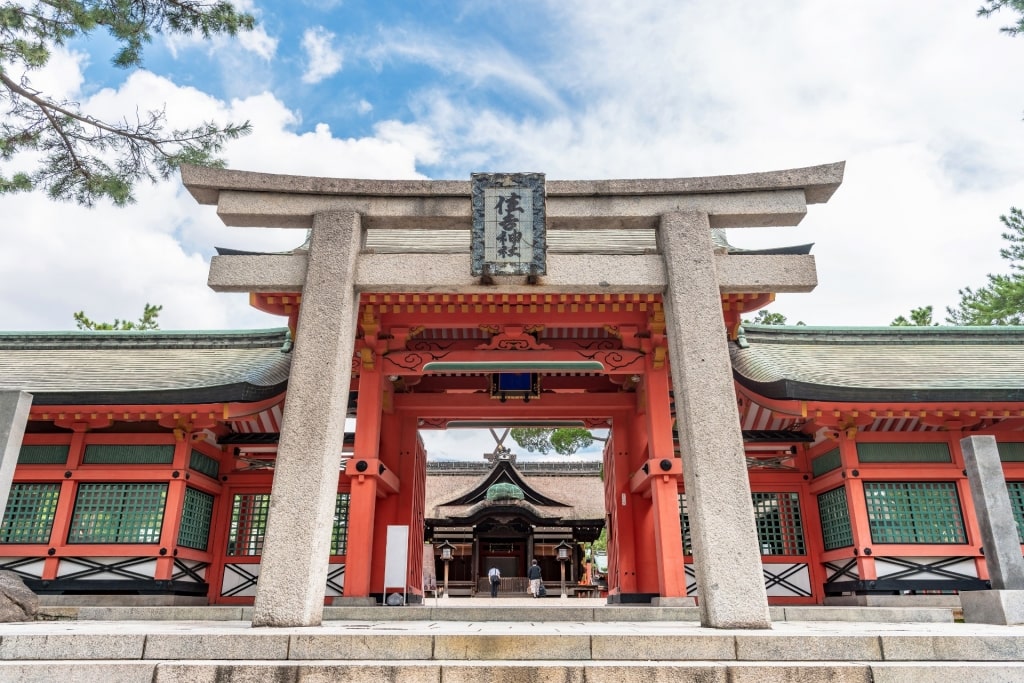
Sumiyoshi Taisha Shrine, Osaka
Sumiyoshi-san, as it is called by locals, is among the oldest Shinto shrines in Japan. Its history can be traced back to 211, and the architecture is from a time before Japan opened up to Buddhism.
The port that stood nearby—before land reclamation—was for centuries the country’s entrance point on the Silk Road. The shrine itself is dedicated to the gods of the sea, sea voyages, and diplomacy.
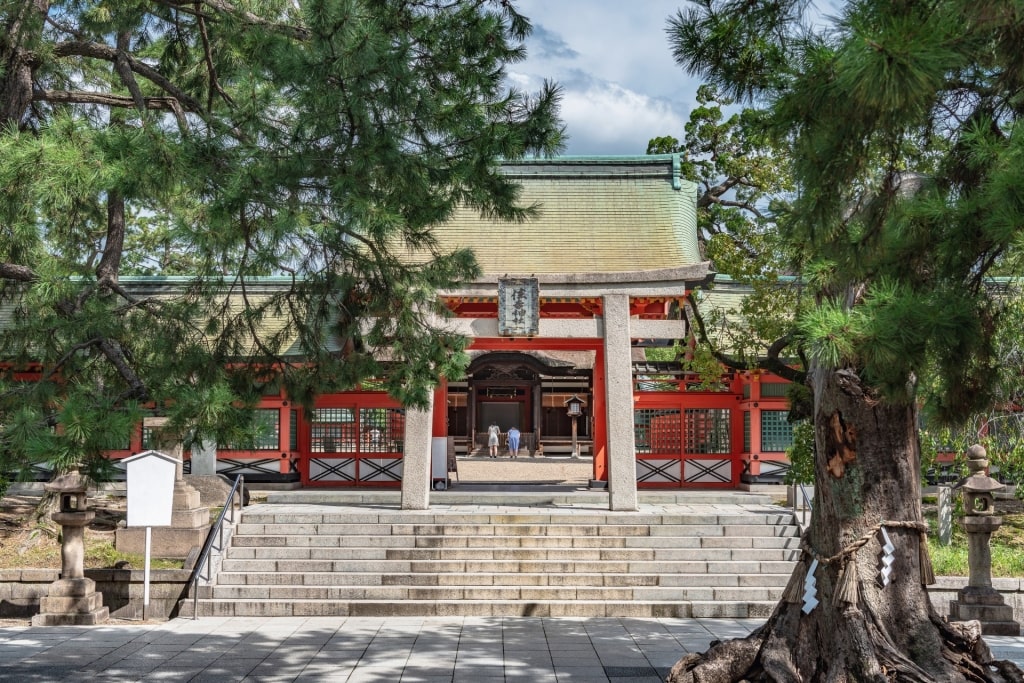
Sumiyoshi Taisha Shrine, Osaka
The Sumiyoshi-zukuri style of architecture takes its name from the shrine. It is characterized by straight roofs, an entrance under the gable and a surrounding fence.
The shrine also lends its name to the simple style of torii found here. The stone gate south of the main hall—itself a National Treasure—has square edges and a middle bar that does not extend out beyond the top kasagi.
While vermillion is the traditional color of torii, the natural stone here is only one variation. You can also find examples that are white, or with the cross pieces painted black.
Hakone Shrine, Lake Ashi, near Shimizu
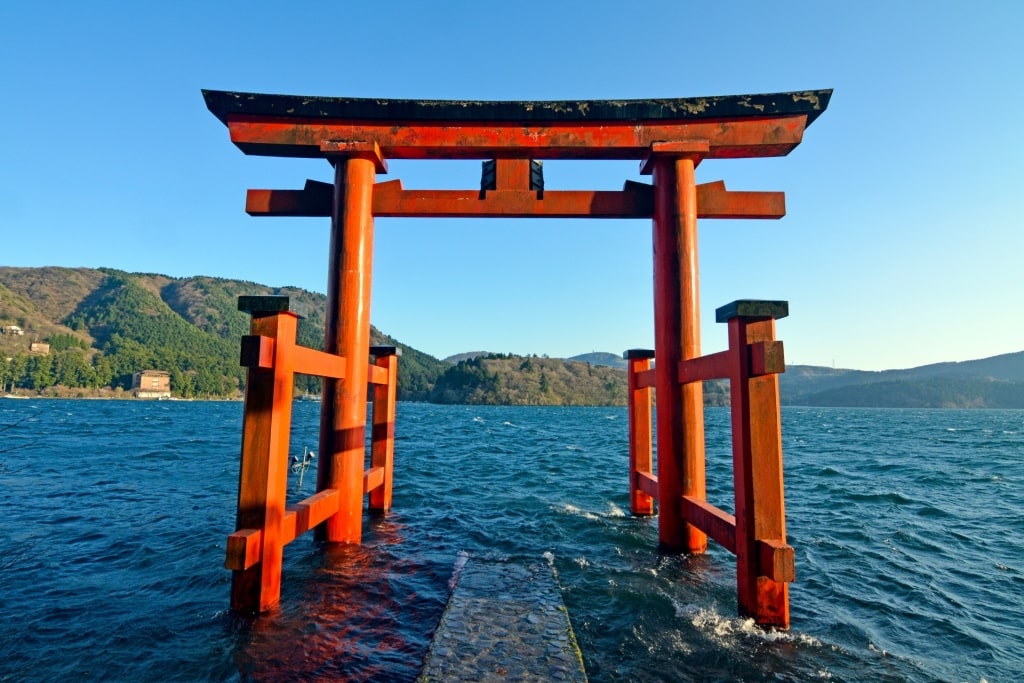
Hakone Shrine in Lake Ashi, near Shimizu
Originally built on a summit of Mount Hakone in 757, this shrine was moved to Lake Ashi in 1667. One of its three impressive torii stands in the lake, a picturesque sight against the blue water and green trees.
The shrine was an important stop on the Old Tokaido Road between Tokyo (then called Edo) and Kyoto (then the capital) during the peaceful and prosperous Edo period (1603-1868). Cedar trees planted to shelter that ancient road are now 400 years old and an attraction in themselves.
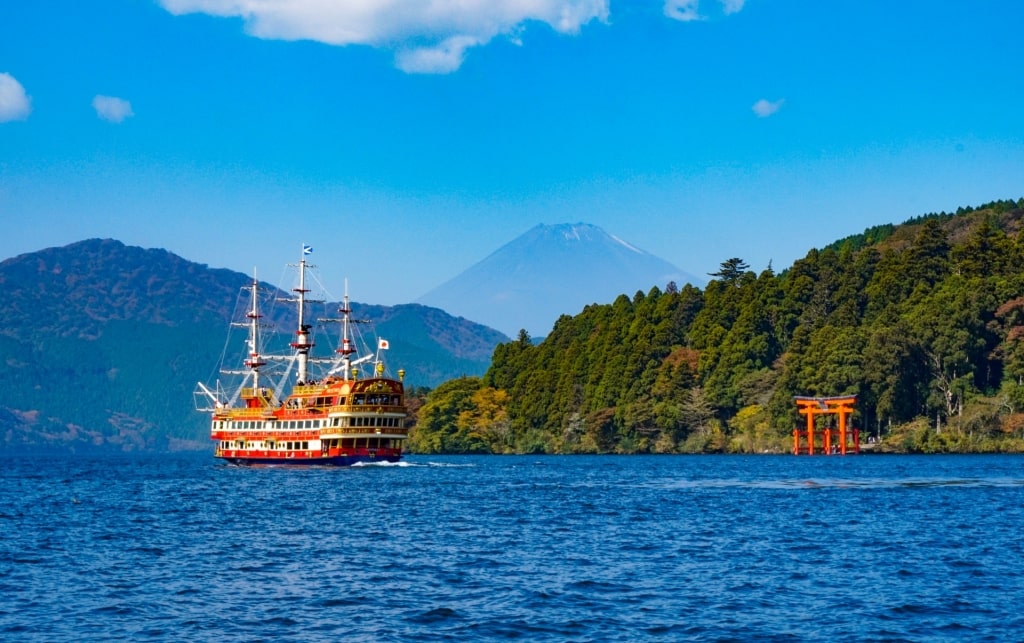
Hakone Shrine in Lake Ashi, near Shimizu
The red torii in the lake is often pictured in the background with Mount Fuji, one of the most beautiful mountains in Japan. Built only in 1952, it is officially called Heiwa-no-torii (The Torii of Peace) and marks the return of Japan’s independence after WWII.
The shrine’s two other massive torii more conventionally mark the path to the shrine itself. It’s important in Shinto to enter and exit a shrine by the same gate, as you are leaving the real world behind to enter the spiritual one.
Nezu Shrine, Tokyo
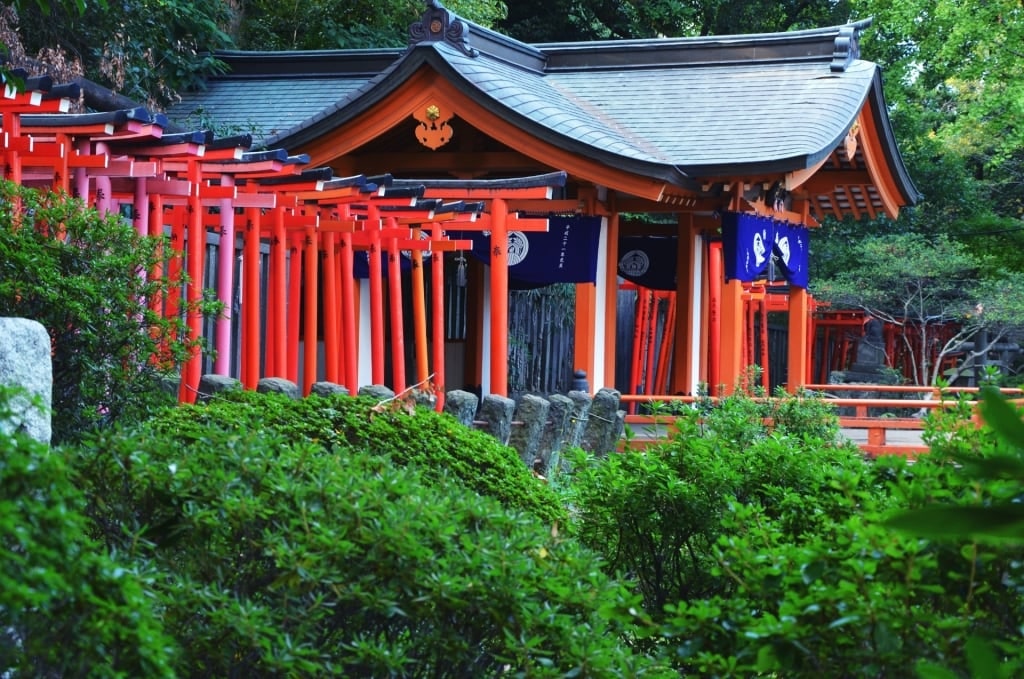
Nezu Shrine, Tokyo
Just to prove that Shinto shrines do not need to be deep in the countryside, why not search out this lovely Tokyo neighborhood shrine? Its torii are battered and weathered, but all the more intimate for that.
Not far from Tokyo Dome, this shrine was founded in 1705, making it Tokyo’s oldest. It’s famous as a place for young women to pray for a husband.
The torii leading to the shrine are not the grand structures of so many other shrines. Being only a bit higher and wider than the average person, walking the narrow path through them is an intimate experience.
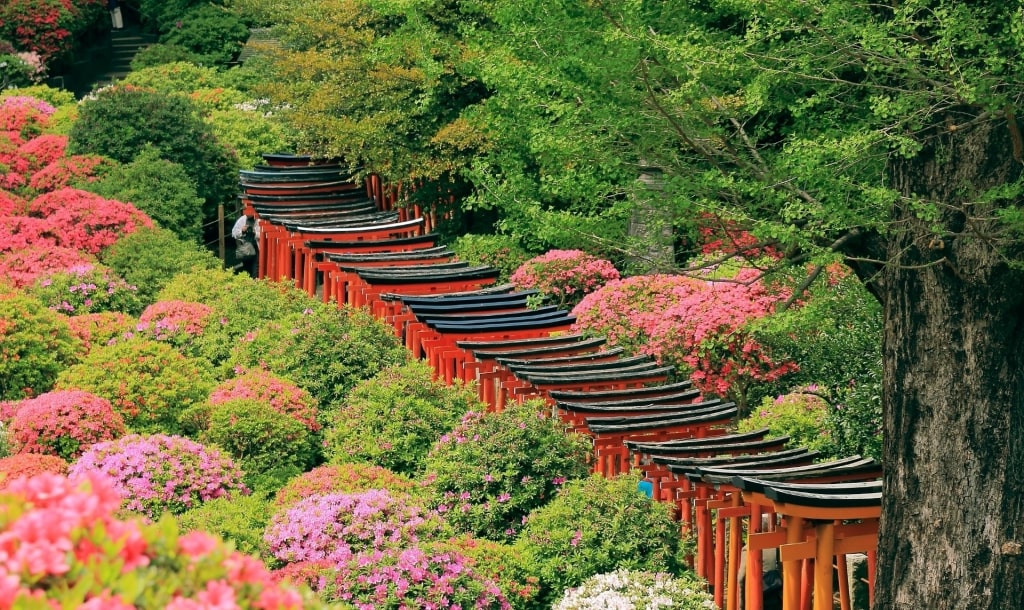
Nezu Shrine, Tokyo
Nezu Shrine has a reputation as a “power spot”, a place to experience a boost of positive energy. If only because of the ducking and diving needed to navigate the torii path, you’ll certainly feel something.
In mid to late spring, azalea season, the grounds burst into color. There are some 3,000 azalea bushes, which become the focus of a crowded Tsutsuji Matsuri (Azalea Festival).
Read: Three Days in Tokyo: The Ultimate Itinerary
Fujiyoshida Sengen Shrine, near Mt. Fuji
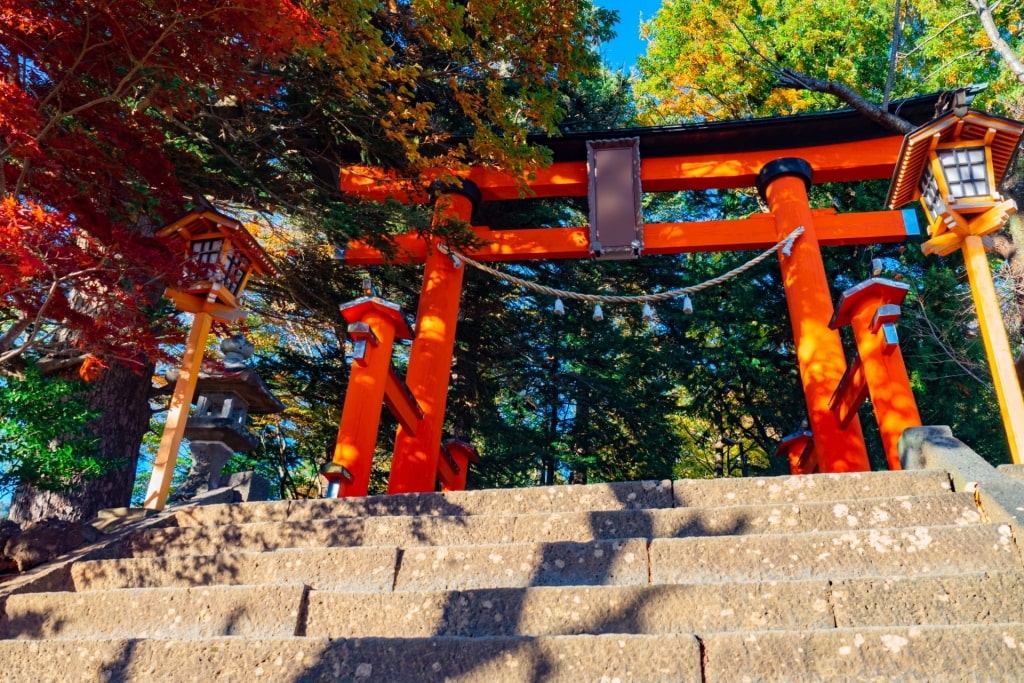
Fujiyoshida Sengen Shrine, near Mt. Fuji
A torii is more than an impressive bit of carpentry. To pass through one is to enter the Shinto world of the spirits, according to beliefs.
A visit to Fujiyoshida Sengen Shrine may be one of the best ways to understand this. Dedicated to the “kami”, or spirit of Mount Fuji, a shrine has stood here for at least 13 centuries.
Shinto (“the way of kami”) is a set of indigenous Japanese beliefs deeply intertwined with nature. Shrines are where you interact with kami, the spirits inhabiting trees, mountains, and lakes, among many other things.
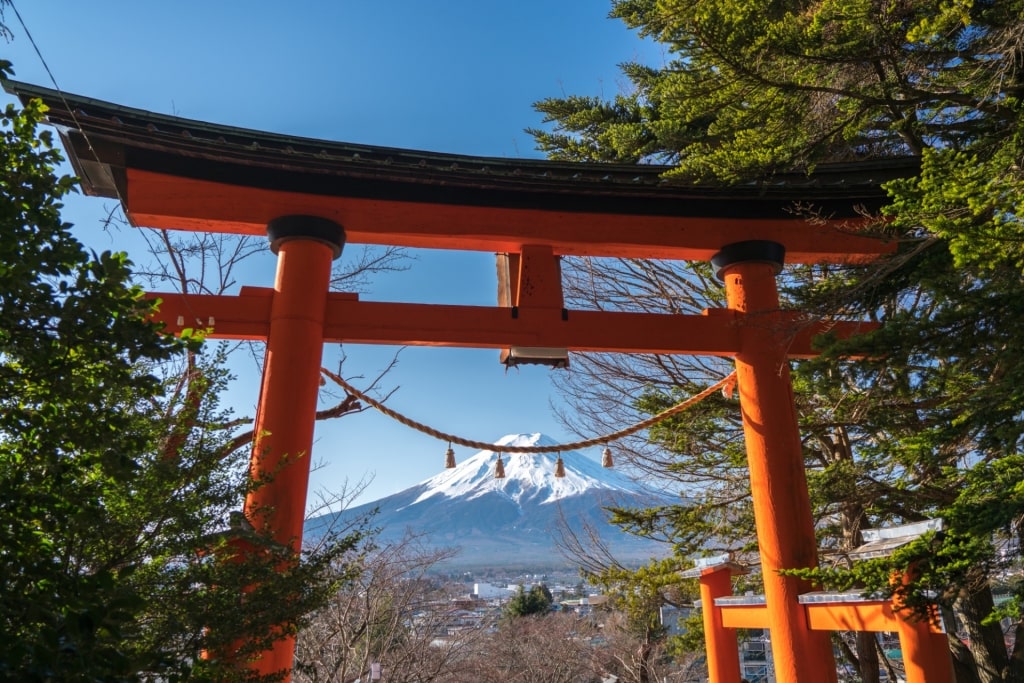
Fujiyoshida Sengen Shrine, near Mt. Fuji
Here, in the shadow of Japan’s most sacred mountain, you can feel the weight of those ancient beliefs that Japan is known for. Surrounded by ancient cedar trees, several thousand years old, this shrine is deeply connected to nature.
Its 60 foot-high, dark red torii reminds you of your own insignificance. Pass on through to somewhere you can slow down, breathe deep and find inner peace as part of the natural world.
Itsukushima Shrine, Miyajima Island, Hiroshima
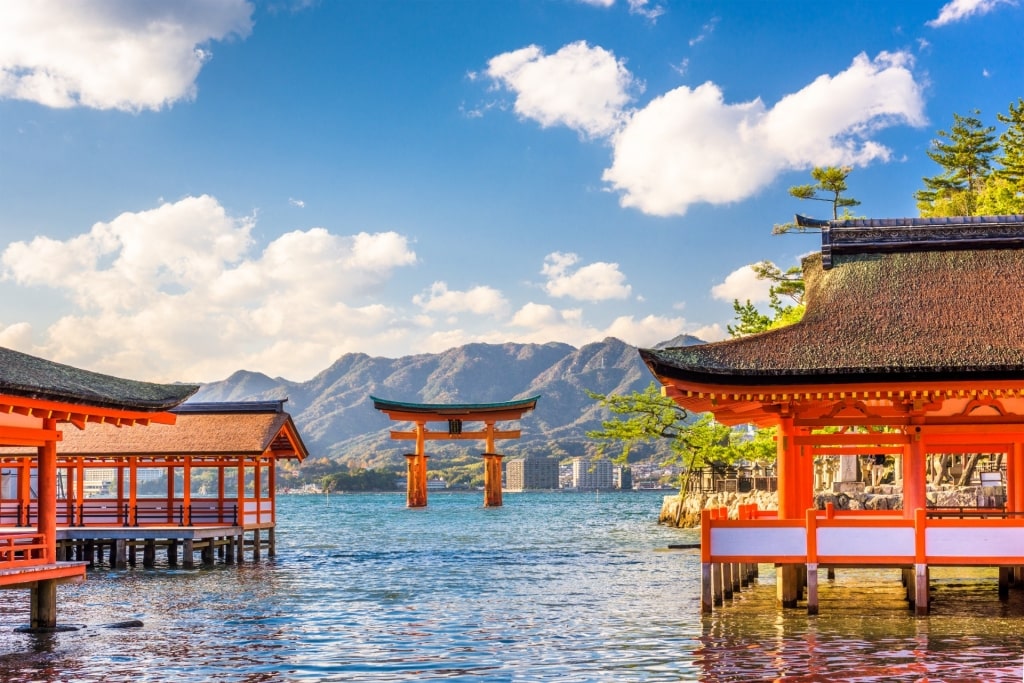
Itsukushima Shrine in Miyajima Island, Hiroshima
Seeming to float on water, its bright red image reflected as a perfect duplicate, Itsukushima’s torii is one of the best places to visit in Japan.
A mile off the coast of Hiroshima, the gate has stood here for 1,500 years. The current one, of course, while among the very best torii in Japan, is not the original. It’s the eighth reincarnation, having been built in 1875.
Any torii, like the shrine itself, needs constant repair and renewal. That sense of impermanence is a central part of Shinto philosophy.
Using natural materials such as wood and stone to build shrines means the structures also follow the natural cycle of life and death. Contemplating their decay and renewal means accepting your own mortality.
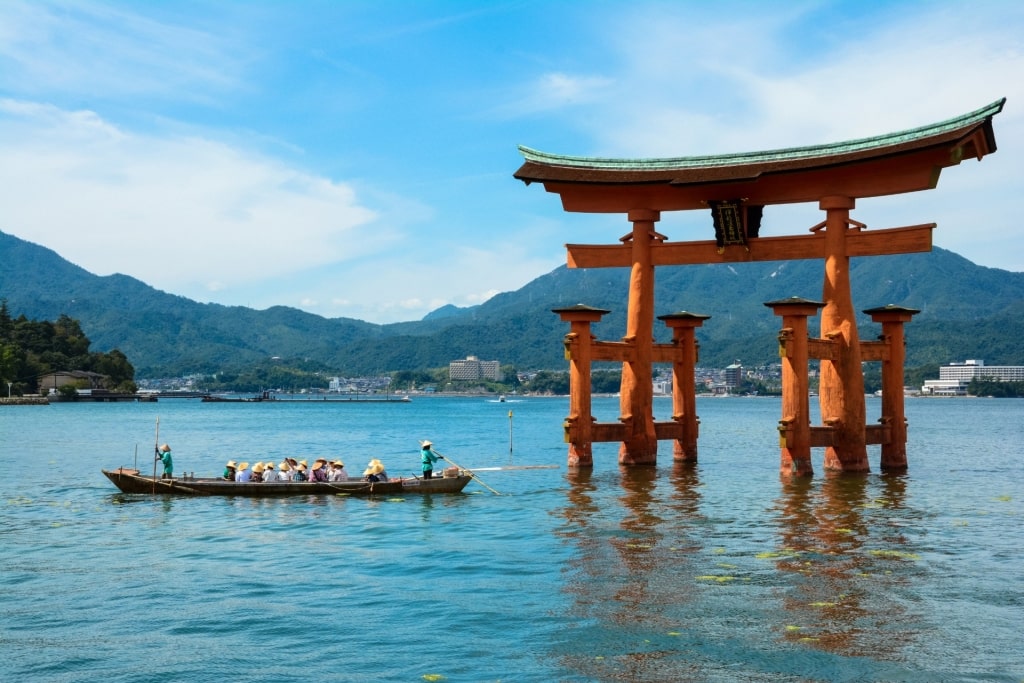
Itsukushima Shrine in Miyajima Island, Hiroshima
The landmark stands on the sea bed and is in the Myojin style, but modified with four supporting pillars called yoji-torii. This style is known as Ryobu-torii and is associated with Shingo Buddhism.
It’s no surprise, then, to find two pagodas and the important Buddhist Daisho-in temple complex—one of the most famous temples in Japan—on Miyajima (“Shrine Island”). However, the shrine itself is dedicated to three Shinto goddesses who protect the imperial family, the nation and seafarers.
Read: Best Things to Do in Hiroshima
Kasuga Taisha Shrine, Nara, near Kobe
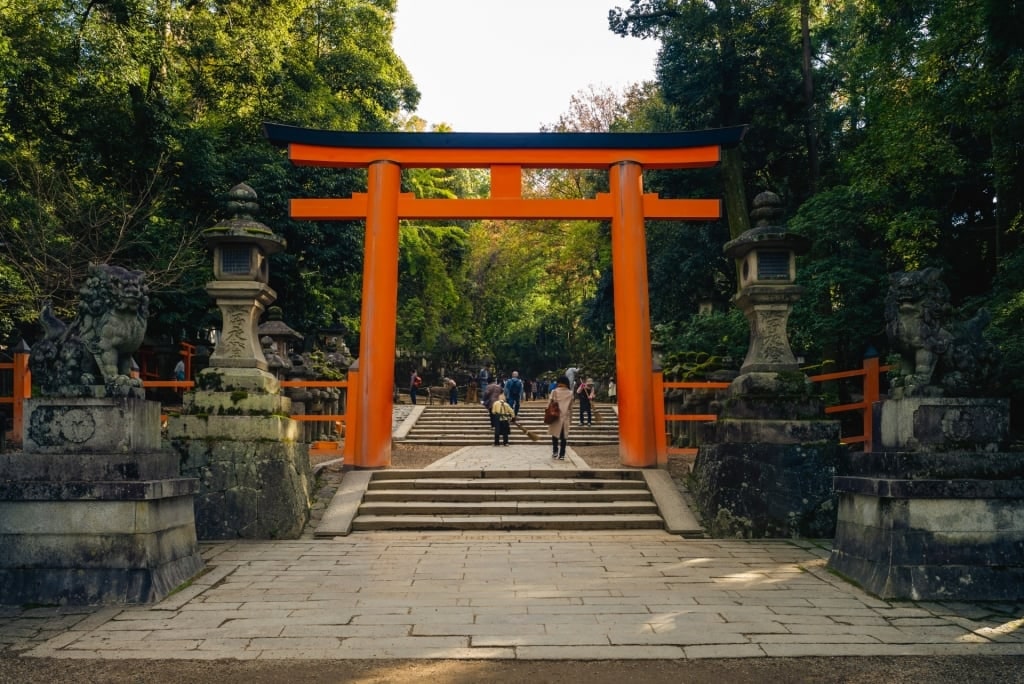
Kasuga Taisha Shrine in Nara, near Kobe
Kasuga is another shrine where the torii has given its name to a style. The gate is one of Japan’s oldest, and is in the simpler Shinmei form.
Presuming torii originated as simple wooden logs, the Shinmei style is closer to those roots. Its upper kasagi is straight, its pillars are perpendicular, and it doesn’t have any gaku displaying the shrine’s name.
At Kasuga, both its toriis’ two cross-pieces (the upper kasagi and supporting shimaki) are also cut straight. However, the kasagi now has a slight upward curve—giving us a style evolving into Myojin.
The two main styles of torii—the early Shinmei and curved Myojin—can be divided into at least 60 subdivisions.
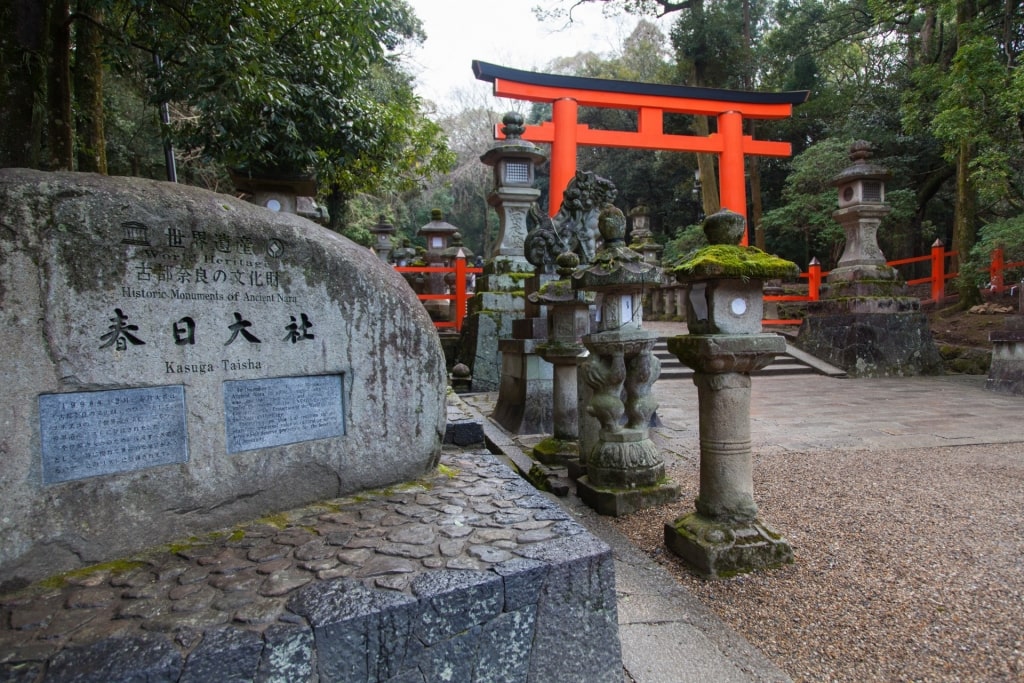
Kasuga Taisha Shrine in Nara, near Kobe
Kasuga—part of a UNESCO World Heritage Site—is dedicated to a bewildering array of Shinto kami and Buddhist gods. Basically, there is something for everyone, with some 60 or more shrines dedicated to everything from love to death.
However, it is most famous for its thousands of lanterns. Founded in 768, it stands in a forest where hunting and logging have been banned since 841.
Morito Daimyojin Shrine, Kanagawa, near Yokohama
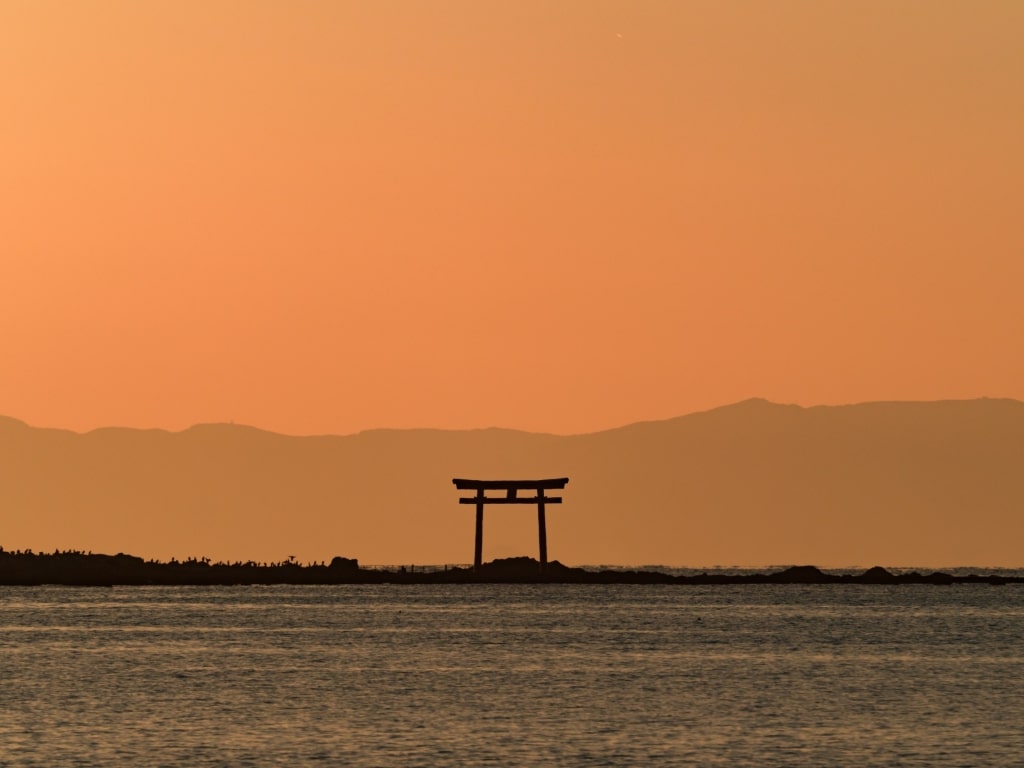
Morito Daimyojin Shrine in Kanagawa, near Yokohama
Less than an hour from the busy Yokohama port, this shrine embraces the sea in a completely different way. A red torii stands on an island just offshore, with Mount Fuji looming behind it to make a photographer’s dream shot.
The shrine faces this view, as it has done for at least four centuries. A distinctive pine in the shrine grounds has been recognized since the 12th century.
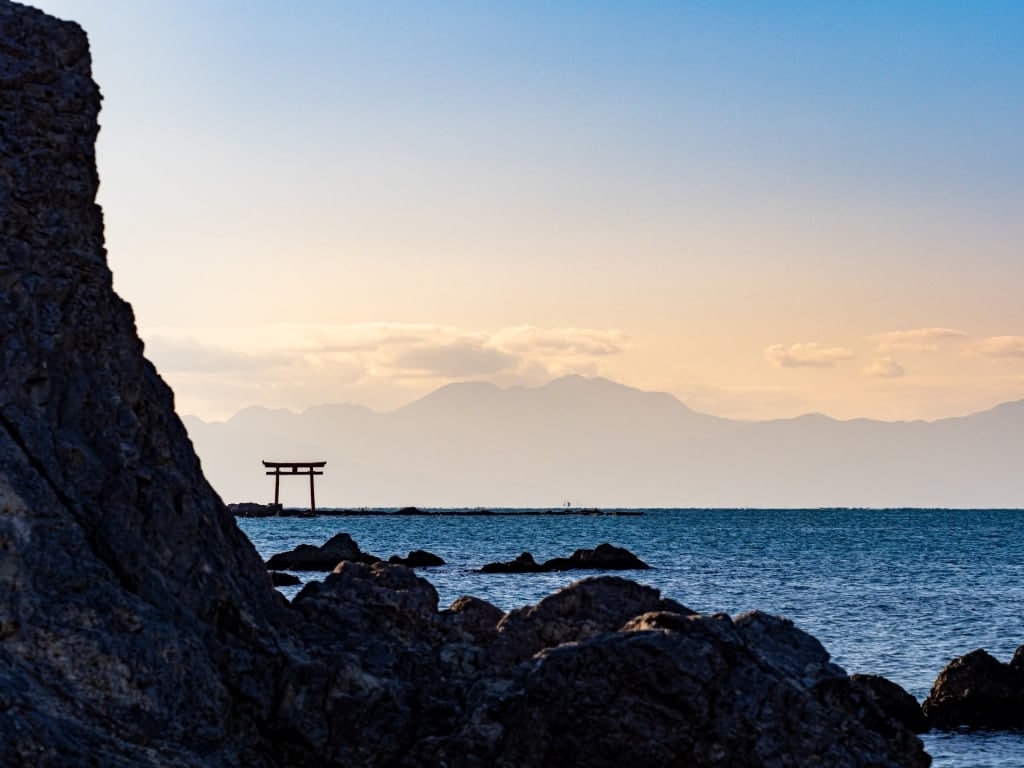
Morito Daimyojin Shrine in Kanagawa, near Yokohama
Morito is a place to pray for help against natural disasters and for good weather. But, like many Shinto shrines, other kami have been added to the prayers over the centuries.
Small, somewhat specific internal shrines include Oseki Inarisha, a spot to pray if you have a sore throat. Suitengu is for women worried about fertility and safe delivery.
The stones at Kodakara Ishi Nassho are left there by parents asking for their children to be as strong as stone. Other shrines are for help with livestock or pets, and to remember ancestors.
In front of the shrine, there is a wide sandy beach. Shallow and calm, it’s a popular swimming and sunbathing spot in summer.
Read: Best Beaches in Japan
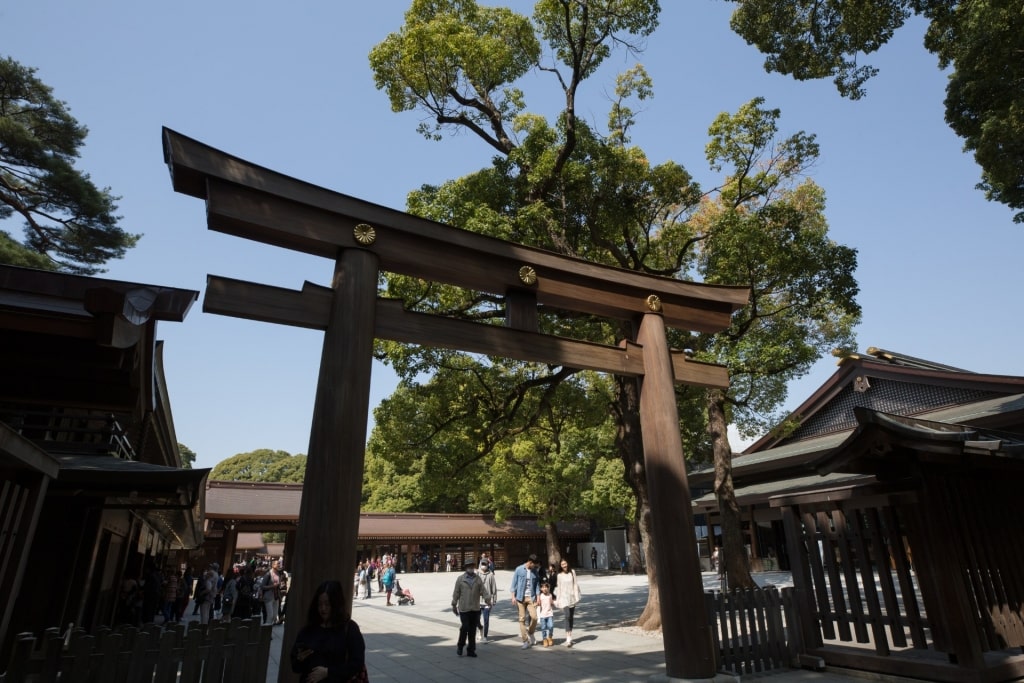
Meiji Jingu Shrine, Tokyo
Would you love to see some of the best torii gates in Japan for yourself? Browse our cruises to Japan and explore the many other incredible wonders of the nation.
